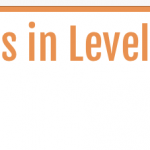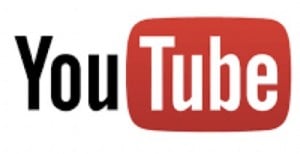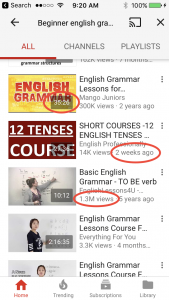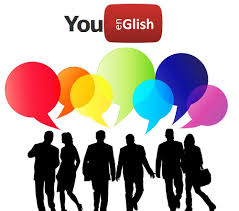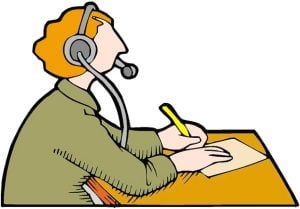 Dictation is listening to someone speaking and then trying to write what you hear.
Dictation is listening to someone speaking and then trying to write what you hear.
Practicing dictation can help improve your:
- English listening skills
- Grammar
- Writing and Punctuation
- Spelling
- Speaking and pronunciation (if you speak the words you hear – out loud – while you’re writing it)
The EnglishClub website has a good collection of dictation exercises, at 3 different levels of difficulty. Here’s an example:
1. Listen to the dictation at normal speed (just listen; don’t try to write it).
2. Listen again at slow speed and try to write/type what your hear (with a smartphone, you need to use paper).
Include capitalization and punctuation.
3. Listen again at slow speed if you need to.
4. Listen at normal speed for a last check.
5. When you’re ready, click/press Show Answer and compare the answer to your writing.
(The mailbox is just behind the big water fountain.)

 When you watch a video in English (TV show, movie, YouTube, etc), you can often choose to display the English words at the bottom of your screen – as they are being spoken. This is called
When you watch a video in English (TV show, movie, YouTube, etc), you can often choose to display the English words at the bottom of your screen – as they are being spoken. This is called 
